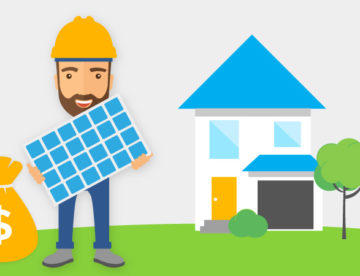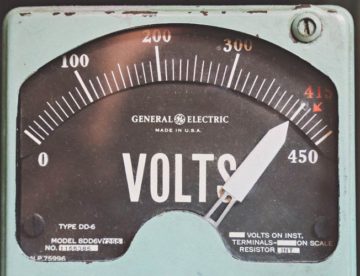We first wrote in 2016 about the advantages of solar energy from a homeowners perspective of using solar energy to power their homes.
A lot has changed between then and now and so we thought it was time to update this article. Some of these changes are;
- Solar batteries and energy storage solutions have sprung up;
- The cost of solar has fallen (a lot!);
- New solar batteries with integrated battery inverters have come out;
- The federal solar tax credit was extended to the end of 2020 (but is reducing at the end of 2019);
- Some local solar incentives have gone and some new solar incentives have started;
- The Trump administration imposed tariffs on solar panels;
- Net metering has survived in key states but is under attack from utility companies by the day.
All of these things have changed the relative advantages of installing solar panels v’s relative disadvantages of solar energy.
On balance, the argument for an average American homeowner installing solar panels for home is now better than it has ever been. In net terms, the advantages now far outweigh the disadvantages.
Advantages of Solar Energy
1. Marginal cost of generation is zero
For most American homeowners the most significant attraction to solar power is that once the capital cost of installation is paid off the energy is free. This means the only real question is whether the payback period on the capital investment is better than the returns you would get from investing the same money in other ways.
You may be surprised that we now list this as the leading advantage of solar energy. The reason we do this is that most homeowners are now more interested in the financial aspects of installing solar rather than the environmental benefits.
The importance we put on this factor has increased since our original article because solar payback and returns on investment have improved a lot since 2016 because of falling residential solar panels cost. You can use the solar cost estimator on our sister site Solar-Estimate.org to see solar panel cost tailored to the size and location of you home based on live current solar offers in your city. The calculator will give you a fairly accurate estimate of your investment return from solar panels and your payback period. Once you have reached your payback period you have free electricity from that point on.
2. Insurance against rising power prices
Installing a solar power system on your home means you can lock in a price of energy for at least the 25 year life of the solar panels. You know how much energy the solar panels will produce so that once you get an accurate price quote you know exactly how much each kilowatt-hour of energy will cost you over the next 25 years. Many consumers are now able to get a levelized cost of energy of $0.10 per kilowatt hour. When you compare this to the average amount you will pay to your utility for power over the next 25 years, the average consumer with a $150 per month power bill can see savings in the range $30,000 over the life of a solar system. The monthly savings don’t start out being huge, perhaps only $50 per month but in the 25th year it can reach savings of $300 per month. You can use this solar savings calculator to check what your savings will be based on usage and utility rates.
3. Renewable
Solar energy is a renewable energy source:
NASA estimates that the sun will shine for another 6.5 billion years. Most of us aren’t too concerned out that far.
Solar energy is abundant:
The surface of the earth receives 120,000 terawatts of solar radiation (sunlight) – 20,000 times more power than what is needed to supply the entire world.
4. Environmentally Friendly
Harnessing solar energy does not generally cause pollution. Whilst there are some emissions associated with the production and installation of solar energy equipment these emissions are minimal when compared to generating electricity from fossil fuels. The CSIRO, an Australian government research body estimates that the energy payback is 1.5 years. That is, it takes a solar panel 1.5 years to generate the amount of power it took to make it. This statistic was from 2009 and is likely to be a quicker payback now. Given solar panels are warranted to last 25 years this is quite good.
5. Geographically widely available
The level of solar irradiation that falls upon the earth varies with the geography of the planet. Generally, the closer to the equator the more solar energy but what most don’t realize is that solar energy can be used anywhere. For example, in the sunniest parts of America a solar system will produce on average 4.7 kWh of power per 1 kilowatt of solar panels but in the least sunny areas, such as the mountains and north east, it wills till produce 2.9 kilowatt hours per kilowatt, per day. So although some areas are better than others for solar power it is still viable in almost all locations.
6. Reduces Electricity Costs
With the introduction of net metering and feed-in tariff (FIT) schemes, homeowners can now “sell” excess electricity, or receive bill credits, during times when they produce more electricity than what they actually consume. This means that homeowners can reduce their overall electricity expenses by going solar. Data from Solar-Estimate reveals that adding solar panels to your home can bring in annual savings of well above $1000 per year in many states. In California, residents save on average $28,000 after 20 years! The availability of solar finance options in the form of Solar PPA agreements and various zero down loan facilities has meant solar is now more affordable and more available than ever before.
If you want to see the average cost of solar panels installed in your county and calculate savings you could expect from installing solar on your home visit cost of solar panels.
7. Community Solar can be used to overcome installation issues
Because of shading, insufficient space and ownership issues many American homes are simply unfit for solar panels. With the introduction of shared solar, homeowners can subscribe to “community solar gardens”, and generate solar electricity without actually having solar panels on their own rooftops. The advantage of this is that installation costs can be cheaper if large numbers of panels are installed on vacant land. Legislation is required to enable community solar in each state and whilst this has existed from some time in some smaller states it is only just coming into play in key states such as California and New York.
8. No moving Parts means no noise and little maintenance
Because there are no moving parts involved in solar power systems there is no noise associated with photovoltaics. This compares favorably to other renewable technologies such as wind turbines. Also, because there are no moving parts there is no noise pollution from solar technologies.
9. Financial Support from Government/State
In December 2015 the US Senate passed an extension to the 30% Renewable Tax Credit, extending this tax credit for a further 8 years. In addition to this federal tax credit, there are also rebates available in some jurisdictions at either the state, county or utility company level. If you use the solar panel calculator here you can see what rebates, tax credits and other incentives your house is entitled to based on its location, the utility company you are with and the number of solar panels you need to power your home.
10. Technology is Improving
Technological advancements are constantly being made in the design and manufacture of solar power equipment. As the cells in solar panels become more efficient at turning solar energy into electricity the amount of space required to generate a specific amount of solar power will fall. However, do expect dramatic advances, in recent years gains in efficiency have been only modest and incremental rather than revolutionary.




